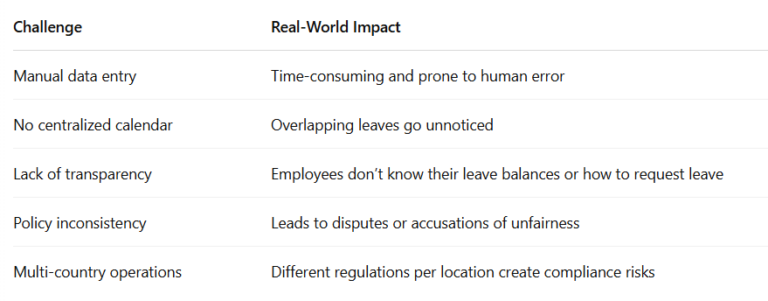Table of Contents
ToggleManaging employee leave sounds simple until your company starts scaling. Suddenly, you’re juggling overlapping requests, leave accruals, legal compliance, and employee expectations all while trying to keep your HR department running smoothly. An efficient vacation tracking system isn’t just a nice-to-have it’s essential.
This detailed guide dives deep into vacation tracking from the HR manager’s perspective, giving you actionable strategies, best practices, and modern tools to streamline the process, minimize errors, and improve employee satisfaction.
Why Vacation Tracking Matters More Than Ever
As organizations grow and embrace remote or hybrid models, tracking who is available—and when—can be more difficult. A well-organized vacation tracking system helps in:
✅ Ensuring Team Availability: Know when key team members are out to avoid project delays.
✅ Promoting Work-Life Balance: Encouraging proper time off helps reduce burnout and improves retention.
✅ Minimizing Legal Risk: Compliance with national and local leave laws is easier with a traceable system.
✅ Improving Payroll Accuracy: Avoid overpaying or underpaying for unused or excess leave.
According to a 2024 SHRM report, companies with automated leave systems reduce payroll errors by 28% and increase HR productivity by up to 35%.
Key Vacation Tracking Challenges HR Teams Face

Step-by-Step: How to Build a Bulletproof Vacation Tracking System
1. Define and Document Your PTO Policy Clearly
This is your foundation. Your PTO policy should answer:
How much leave is offered? (Fixed days or accrual-based?)
How is it earned? (Per month, year, hours worked?)
Is carryover allowed? If yes, how much?
Are there blackout dates during peak seasons?
What is the approval process?
Are part-time or contract workers eligible?
2. Choose a Scalable Leave Tracking Method

3. Automate Your Vacation Tracking Workflows
Manual approval chains and emails are outdated. Here’s what you can automate:
✅ Real-time leave balance updates
✅ Automatic accrual calculations
✅ Notification for approval or rejection
✅ Integration with Outlook/Google Calendar
✅ Slack/Teams notification when someone is off
✅ Holiday calendar updates by country
Integration Examples:
Sync Day Off with Slack or Microsoft Teams for instant leave notifications.
Connect to Outlook calendars to avoid double-booking during someone’s PTO.
4. Ensure Access and Transparency
Make vacation tracking self-service friendly. Employees should be able to:
View their leave history and balance
Request time off via web or mobile
View team leave calendars (to avoid overlaps)
Receive automated confirmations
Managers need:
Dashboards for leave approval
Leave trends across the team
Visibility into upcoming absences
5. Stay Compliant with Local and Global Labor Laws
If you operate internationally or even across states/provinces, be aware:
US: PTO is not mandated federally, but some states (e.g., California, New York) have strict leave laws.
EU: Employees are legally entitled to at least 4 weeks paid leave.
Use tools that allow location-based rules and automation.
Example: Day Off allows assigning different leave policies to different departments or office locations.
6. Track and Analyze Leave Data Regularly
Don’t let your vacation tracking system be a black box. Use analytics to:
Detect underused leave (a sign of burnout)
Identify employees frequently taking unplanned leave
Spot team-wide trends or spikes (e.g., summer)
Adjust policies based on usage
Useful Metrics:
Average days taken per employee
Leave approval time (from request to approval)
Percentage of leave overlaps between team members
7. Encourage a Healthy Time-Off Culture
Even with the best system, some employees hesitate to take leave. That’s a management and culture issue. Encourage:
Managers to lead by example and take time off
Regular check-ins about leave plans
Highlighting stories of rest and productivity
Making sure unused PTO is not seen as loyalty
Final Thoughts
Vacation tracking, when done right, becomes more than a backend task—it becomes a pillar of employee satisfaction, legal compliance, and operational efficiency.
Whether you’re scaling a startup or modernizing an enterprise HR system, now is the time to ditch the spreadsheets and embrace automation, analytics, and transparency.
A powerful vacation tracking tool like Day Off makes leave management effortless—so your HR team can focus on what really matters: building a happy, productive, and well-rested workforce.
